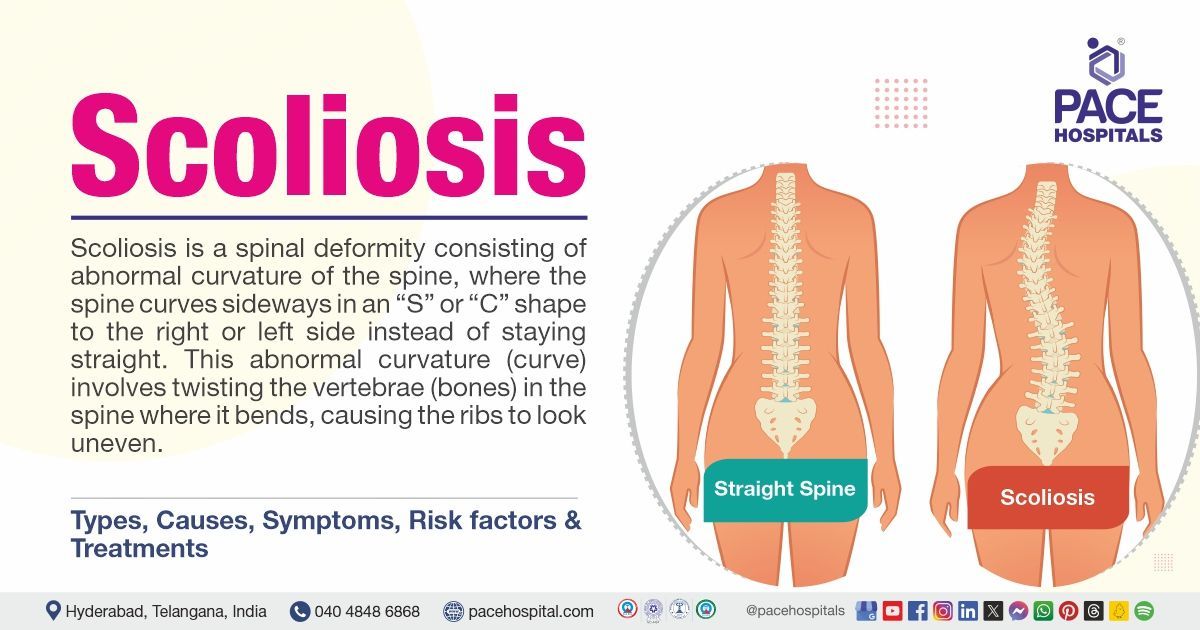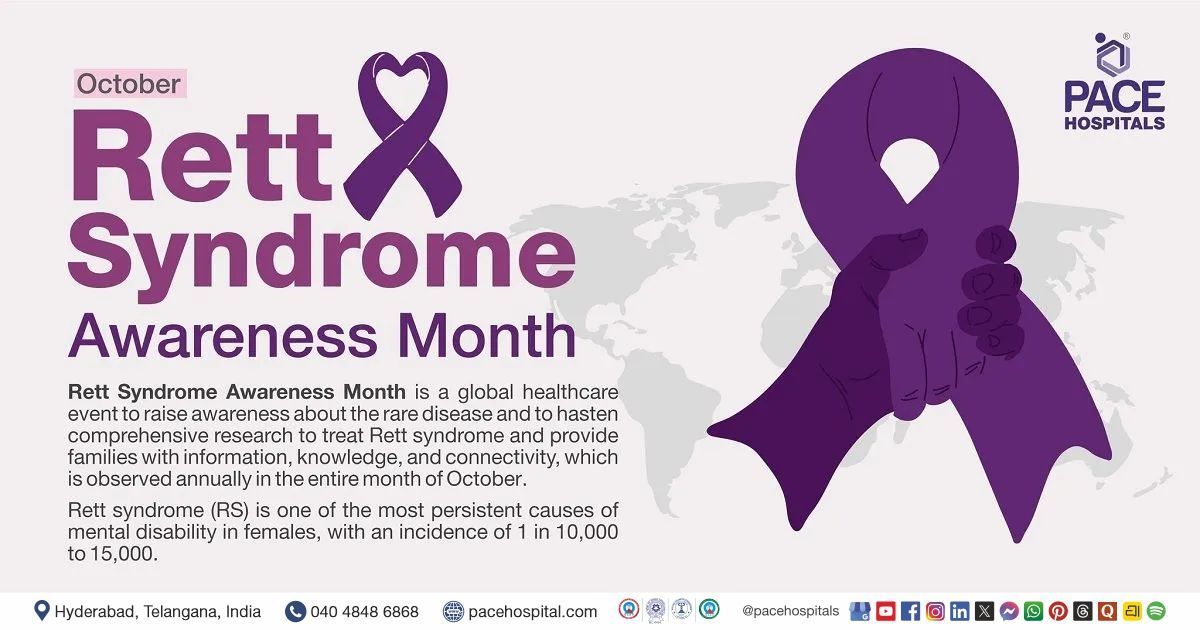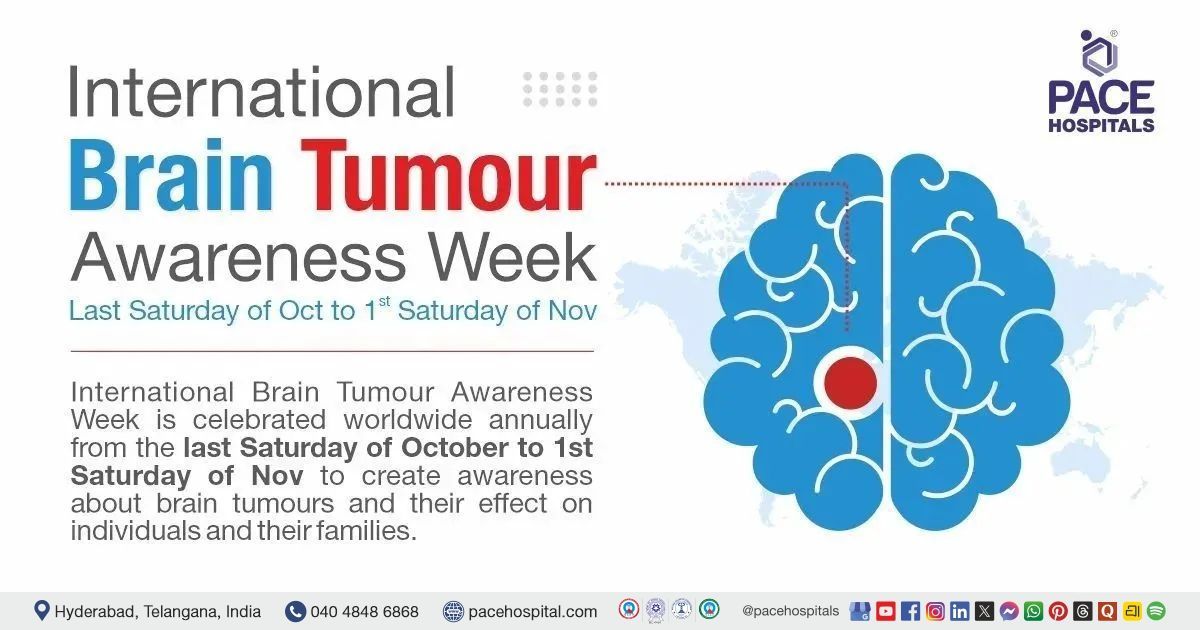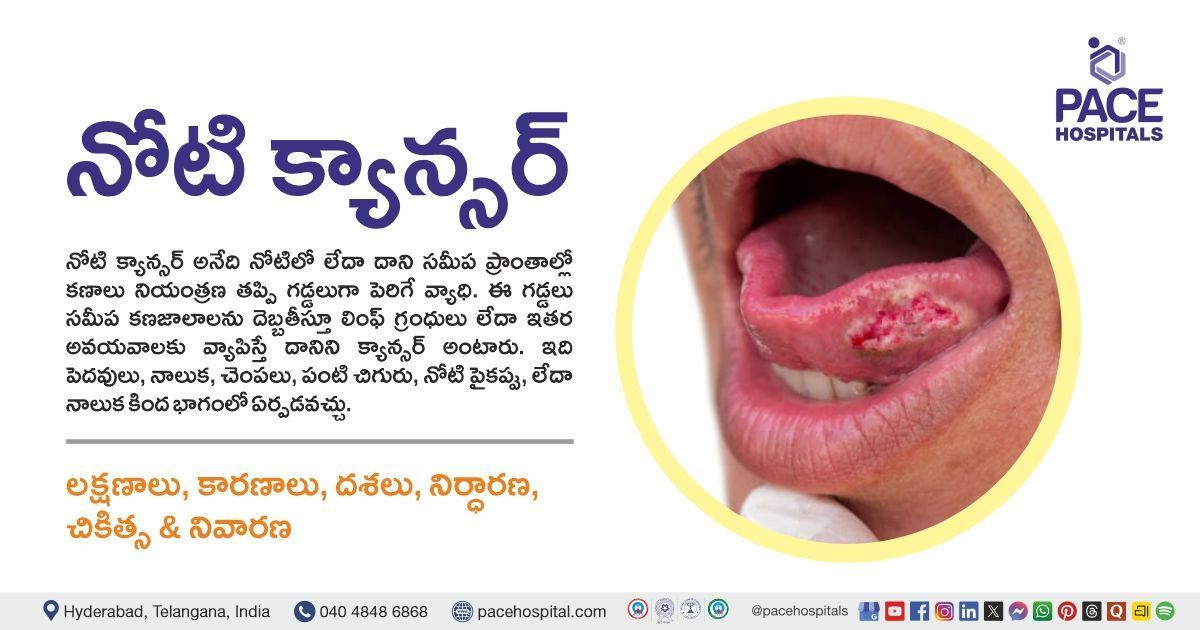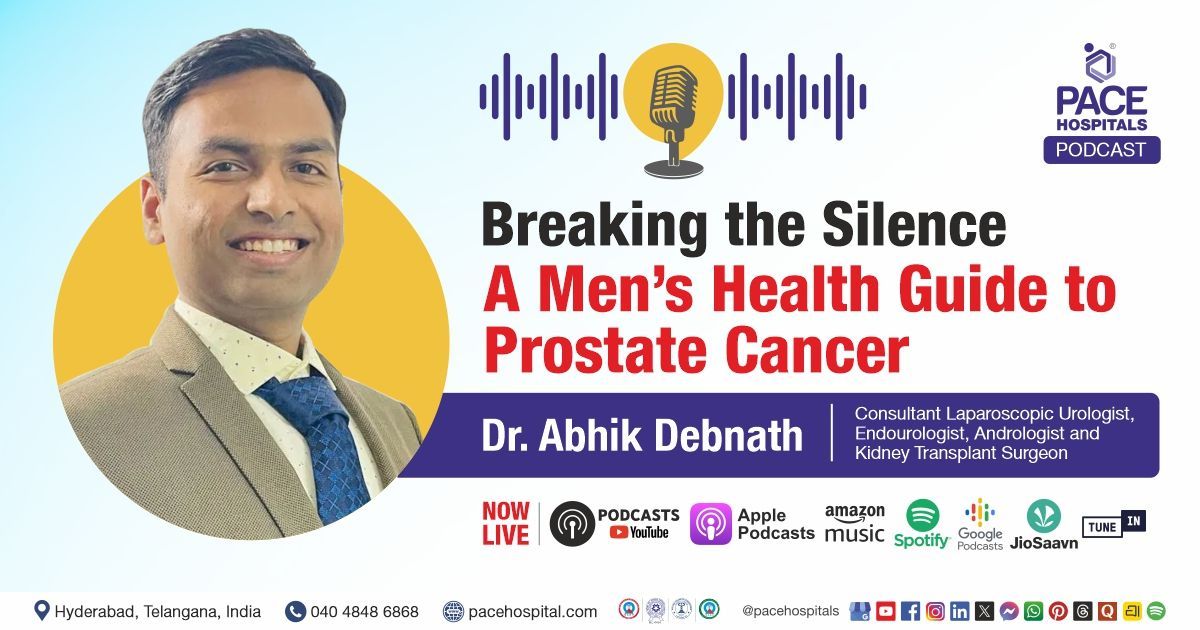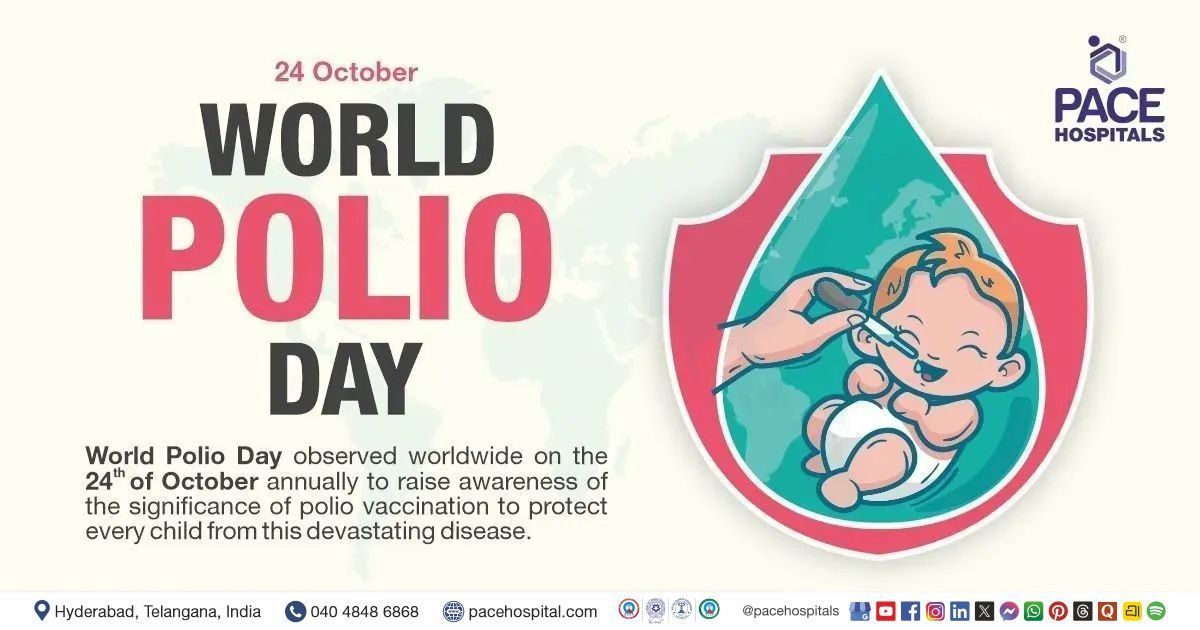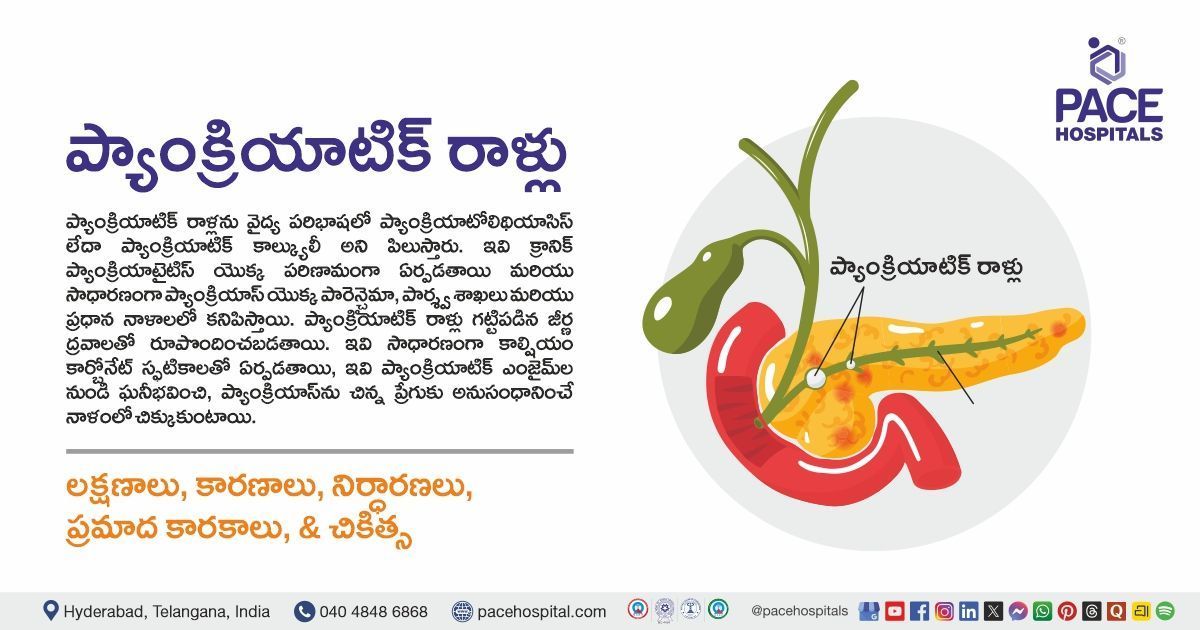Scoliosis - Symptoms, Causes, Types, Treatment
Imagine a graceful posture becoming a daily challenge, a simple movement transformed into a daunting task. Scoliosis a silent curve threatens to distort the harmony of life for many, especially young individuals. From routine activities to personal confidence, its impact twists through daily existence, reminding us of the delicate balance of our bodies and the importance of recognizing and addressing this often-misunderstood condition.
Scoliosis definition
Scoliosis is a spinal deformity consisting of abnormal curvature of the spine, where the spine curves sideways in an “S” or “C” shape to the right or left side instead of staying straight. This abnormal curvature (curve) involves twisting the vertebrae (bones) in the spine where it bends, causing the ribs to look uneven.
Scoliosis may occur in one or more areas of the spine and affects any of its three major sections Including cervical spine (neck), thoracic spine (chest and upper back region), and lumbar spine (lower back - lumbar scoliosis). Moreover, the curve patterns in scoliosis can range from a single short curve to large double or triple curves, resulting in an asymmetrical or uneven appearance of the chest, shoulder blades, shoulder, and hips.
Scoliosis meaning
The term “scoliosis” derived from the ancient Greek word “skolios” which means "curved, crooked" and was first established by Galen.

Types of scoliosis
The following are some of the different types of scoliosis, includes:
- Structural scoliosis
- Idiopathic scoliosis
- Infantile idiopathic scoliosis
- Juvenile idiopathic scoliosis
- Adolescent idiopathic scoliosis
- Congenital scoliosis
- Neuromuscular scoliosis
- Degenerative scoliosis
- Syndromic
- Non-structural scoliosis
Structural scoliosis
In this type, improperly formed vertebrae create a curve that appears like an "S" shape in the spine that is fixed and cannot be straightened by adjusting body position. The below-mentioned comes under this:
- Idiopathic scoliosis: It is the most common type of scoliosis and compromises 80% of all cases.
- Infantile idiopathic scoliosis: It most often develops before the age of three or younger. Boys are commonly affected by this condition.
- Juvenile idiopathic scoliosis: It usually develops in children aged between 4 and 10 and commonly affects girls.
- Adolescent idiopathic scoliosis (most common): It commonly occurs in children aged 11 – 18 (Girls are widely affected).
- Congenital scoliosis: It may result from embryological malformation of one or more vertebrae (bones) and may occur in any area of the spine. The abnormalities in vertebrae may cause curvature and other deformities of the spine.
- Neuromuscular scoliosis: It encompasses scoliosis that is secondary to muscular or neurological disease and is associated with cerebral palsy, spinal cord trauma, muscular atrophy, and spina bifida.
- Degenerative scoliosis: This is also called adult degenerative scoliosis or "de novo" scoliosis, which develops in adult patients and results from degeneration of the discs, arthritis of the adjacent facet joints and collapse and wedging of the disc space.
- Syndromic: Scoliosis may also be found in people with Marfan or Ehlers-Danlos syndrome.
Non-structural scoliosis
It is also known as "functional scoliosis," where the abnormal curvature is temporary and not formed or caused by a malformed vertebra in the spine. However, it may affect posture by a separate condition, skeletal dysplasia or leg length discrepancy.
Prevalence of scoliosis
Scoliosis spine is the most common of all spinal deformities, and prevalence ranges from 2-13.6% across the world.
It commonly occurs in children and adolescents. However, the primary age of onset for this condition is 10-15 years old, and it occurs equally among both genders. However, scoliosis affects females more than males, by a ratio of about 8:1, and female scoliosis curves are more likely to progress and require treatment.
It's important to note that scoliosis often has a familial component. In fact, one in three individuals diagnosed with this condition has a family history of it, underscoring the need for increased awareness and early detection.
Fortunately, most cases of scoliosis tend to be mild. However, some patients may experience a worsening of the curve during puberty.
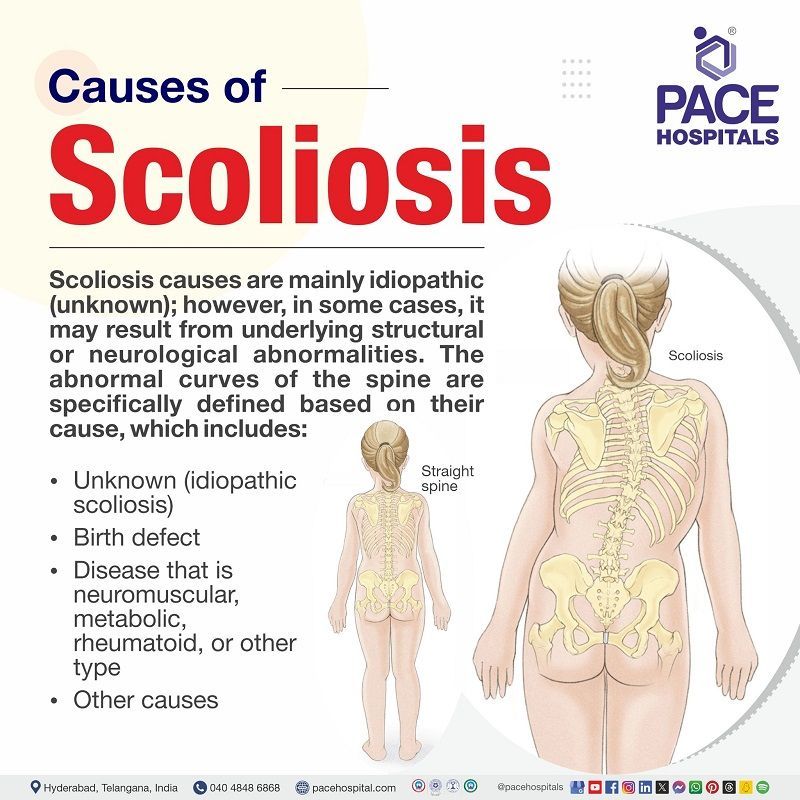
Scoliosis causes
Scoliosis causes are idiopathic (unknown) mainly, however, in some cases, it may result from underlying structural or neurological abnormalities. The abnormal curves of the spine are specifically defined based on their cause, which includes:
Non-structural: The possible causes of structural scoliosis include:
- Unknown (idiopathic scoliosis): Usually, the underlying cause for scoliosis is still unknown. Idiopathic scoliosis is diagnosed when all other potential causes are ruled out, comprising about 80% of all cases. Adolescent idiopathic scoliosis is the most common type and is typically diagnosed during puberty.
- Birth defect: This type of scoliosis (congenital) is present at birth time. It occurs when the infant's ribs or spine bones do not form properly.
- Disease that is neuromuscular, metabolic, rheumatoid, or other type: This scoliosis may be caused by nervous system issues that affect the muscles, including cerebral palsy, muscular dystrophy, spina bifida, and polio.
- Other causes: Other causes, such as injury, infection and abnormal growth, may also be the reasons for developing scoliosis in some patients.
Structural: This type of scoliosis is often temporary (short-term) and goes away when the underlying problem is treated. In this condition, a normal spine is curved due to one or more problems. For example, there may be an inflammatory problem, or leg lengths may be different.
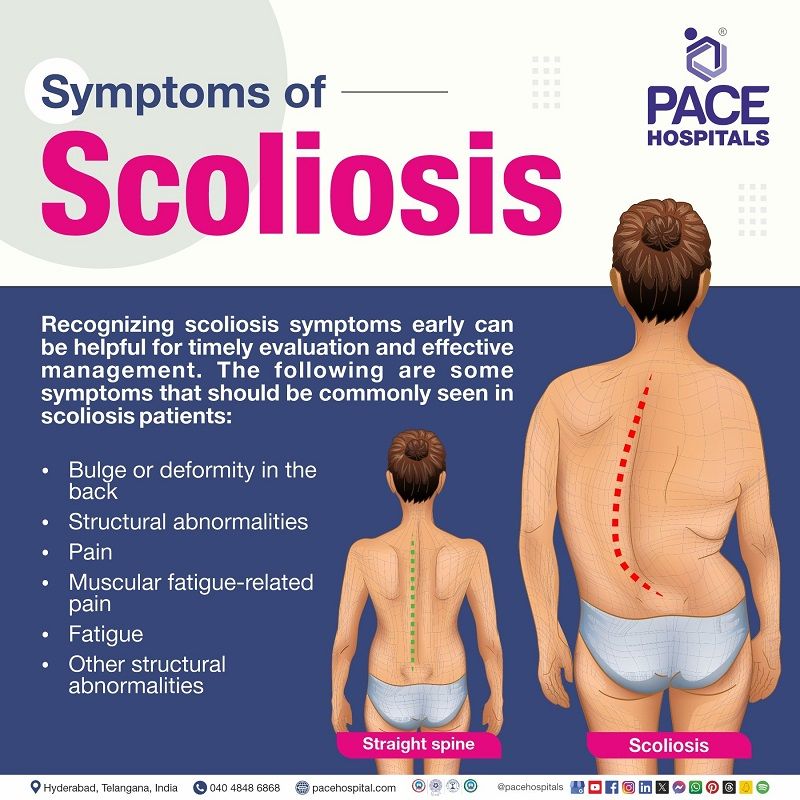
Scoliosis symptoms
Recognizing scoliosis symptoms early can be helpful for timely evaluation and effective management. The following are some symptoms that should be commonly seen in scoliosis patients:
- Bulge or deformity in the back: A bulge or deformity in the back may be visible due to rib cage or muscle rotation.
- Structural abnormalities: One shoulder may appear lower than the other or a rounded shoulder and a sunken or asymmetrical chest shape.
Additional symptoms that may experience by some adults include:
- Pain: Adults with scoliosis often experience pain related to the curve itself or due to compression of the spinal nerves.
- Muscular fatigue-related pain: In some cases, this symptom may occur due to muscles on one side (convex side) working harder to manage posture. In contrast, muscles on the other side are not positioned well enough to function correctly.
- Fatigue: Excessive strain and extra effort on the body's convex side (one side), especially after activities, leads to fatigue and failure.
- Other structural abnormalities:
- A spine that curves inward or downward too much, known as a sway-back
- A pelvis that thrusts forward on one side
- One leg appears shorter than the other.
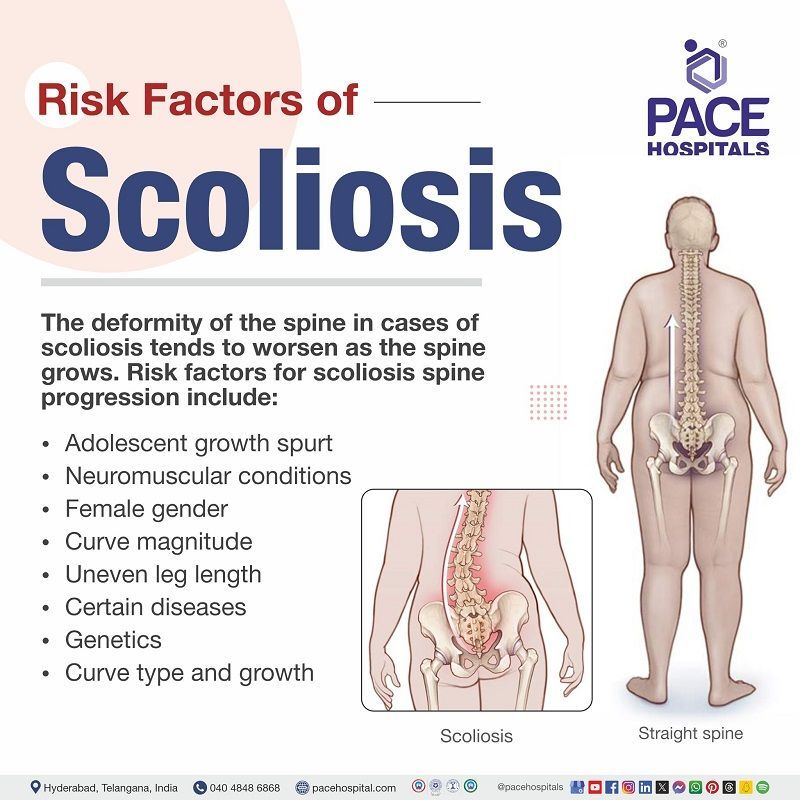
Scoliosis risk factors
The deformity of the spine in cases of scoliosis tends to worsen as the spine grows. Risk factors for scoliosis spine progression include:
- Adolescent growth spurt: Curves progress most rapidly when the child is growing rapidly
- Neuromuscular conditions: Cerebral palsy, spinal cord trauma, muscular atrophy and spina bifida.
- Female gender: Some studies stated that females are more prone to this condition than males.
- Curve magnitude: Curve magnitude greater than 50 degrees at maturity has a high risk for developing progression.
- Uneven leg length: Having one leg shorter than the other may increase the risk of developing progression.
- Certain diseases: Breakdown of the spinal discs may cause this condition, which can occur with arthritis or osteoporosis. Osteoarthritis may raise the risk of scoliosis.
- Genetics: Having the family history can increase the risk of scoliosis.
- Curve type and growth
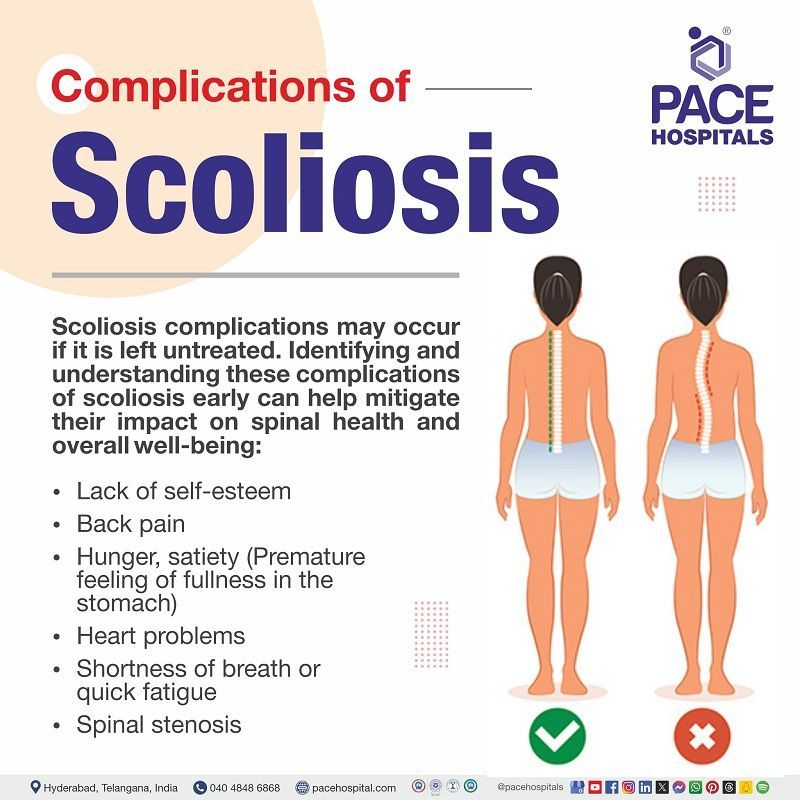
Scoliosis complications
Scoliosis complications may occur if it is left untreated. Identifying and understanding these complications of scoliosis early can help mitigate their impact on spinal health and overall well-being:
- Self-esteem: Having a curved spine and needing to wear a back brace may cause low self-esteem.
- Back pain: It is one of the main problems caused by scoliosis in adults, but it is rare in children and adolescents.
- Hunger, satiety (Premature feeling of fullness in the stomach): Associated pressure on the abdomen can make a patient feel full while having food (eating), even though the stomach itself is not truly full.
- Heart problems: Rarely, scoliosis is associated with abnormal heart mechanics, including a heart valve abnormality known as mitral valve prolapse. However, the reason is not clear.
- Shortness of breath or quick fatigue: Patients with curves over 70 degrees (large and progressive curves) may experience compression of the lungs.
- Spinal stenosis: When nerve compression (pressure on nerves) occurs in the spine, it may lead to spinal stenosis (narrowing of the spinal canal).
Stenosis may generate inflammation in nerves, which, in turn, causes the following complications:
- Tingling or numbness in the legs
- Incontinence— loss of bladder or bowel control
- Erectile dysfunction — an inability to get or maintain an erection
Scoliosis diagnosis
Scoliosis diagnosis is determined by examining the shape of the back and trunk. As scoliosis advances, a difference (asymmetry) in the height of the shoulders may develop, as well as in the waistline and back contour, may develop. The following diagnostic tests will be performed to identify the scoliosis and its progression:
- Physical examination: A healthcare professional may ask the patient to stand upright, to check to see the hips level, shoulder level, and position of the head and to examine the movement of the spine in all directions.
- Forward bending test (Adam test): This is the standard test for screening scoliosis, where the patient will be asked to bend forward to observe the patient's back and look for a difference in the shape of the ribs on each side.
- Imaging tests: A forward bending test may detect scoliosis; however, it cannot detect the presence of congenital abnormalities. To get more information, healthcare professionals may recommend imaging tests.
- X-rays: Images of the patient's spine will be taken from the back and side. These tests will show the abnormal vertebrae and how severe the curve is.
- Computed tomography (CT) scan: A CT scan provides detailed pictures of the patient's spine, showing the shape, size, and position of the bones (vertebrae).
- Ultrasound: This test will be performed on the patient's kidneys to detect any problems.
- Magnetic resonance imaging (MRI) scan: MRI is used to evaluate the soft tissues better than a CT scan and to check for abnormalities in the spinal cord.
Scoliosis treatment
Scoliosis treatment will be defined depending on the type of abnormality, the severity of the curve, how likely that curve will get worse in the future, and any other health issues a patient has. The following are the current treatment options that the orthopaedics and spine surgeons will use:
- Conservative treatment (Non-surgical treatment)
- Observation
- The use of a brace (orthosis)
- Exercises
- Surgical treatment
- Spinal fusion (arthrodesis)
- Posterior approach
- Anterior approach
- Decompressive laminectomy
- Minimally invasive surgery (MIS)
Conservative treatment (Non-surgical treatment)
- Observation: It involves periodically checking the spine by performing X-rays. It is appropriate for mild-sized curves with a low risk of progression when the patient (children) is still in the growing phase or for moderate-sized curves when the patient's growth is completed.
- Bracing or casting: Bracing and casting methods are recommended for younger children with scoliosis and are less specific for adolescents. The goal is to keep the curve stable, preventing the spinal curve from getting worse until the child's skeleton matures and stops growing.
- Exercises: Activities (specific scoliosis exercises) that strengthen and stretch the back may help reduce pain. Exercise can also help maintain a healthy weight, reducing the strain on the back.
Surgical treatment
Surgical treatment is indicated for moderate to severe size curves. It may be recommended when the curve progresses and significant growth is left in the spine or if the brace treatment fails. The following are some of the surgical treatments used to treat scoliosis:
- Spinal fusion (arthrodesis): In this procedure, implants are attached to the patient's spine to hold the spine in its new corrected place until the vertebrae are fused. Implant anchors may include polyester bands, hooks, screws and wires.
- Posterior approach: It is the most frequently performed scoliosis surgery. The procedure involves posterior spinal fusion with instrumentation and bone grafting, which includes placing hooks, screws, wires, or other devices at each vertebral level involved in the curve, which is done through the back side while the patient lies on his or her stomach.
- Anterior approach: In this approach, the spine surgeon accesses the spinal column by making incisions on the patient's front side (chest or abdomen) to expose the anterior or front part of the spine. Fusion in this area requires the removal of the soft disc material between the bone and replacing this tissue with a bone graft.
- Decompressive laminectomy: It is often recommended in scoliosis patients to relieve pressure on nerves or the spinal cord caused by spinal stenosis or other conditions. The laminae (roof) of the bone (vertebrae) will be removed to create more space for the nerves and reduce the neurological symptoms associated with compression.
- Minimally invasive surgery (MIS): Sometimes, fusion may be performed via smaller incisions through minimally invasive surgery (MIS) by using advanced fluoroscopy (X-ray imaging during surgery) and endoscopy (camera technology).
Scoliosis prevention
While there have yet to be great strides in preventing scoliosis, current research indicates that it is not linked to factors such as bad posture, exercise or diet. However, understanding the causes and risk factors may help identify and reduce the progression. The following are some of the steps which will be helpful to promote spine health and decrease the progression:
- Maintain good posture: Proper posture habits are important for maintaining spine health, particularly during growth spurts (a period when a child's length, height, and weight rapidly increase) in children and teens.
- Stay active: Exercising regularly promotes muscle balance and core strength, which help support the spine and reduce the likelihood of developing progression.
- Regular screening: The key to effective intervention is early identification of scoliosis. By staying vigilant and scheduling routine checkups during childhood and adolescence, can play a crucial role in the early identification and effective treatment of scoliosis.
- Proper nutrition: Eating healthy food with sufficient calcium, potassium, and vitamin D is important for bone health.
- Avoid heavy backpacks: Improperly carrying heavy bags or backpacks may strain the spine and increase the risk of spine-related problems.
Differences between scoliosis and kyphosis
Scoliosis vs kyphosis
Scoliosis and kyphosis are both spinal deformities that cause the spine to be abnormally shaped. Though the conditions may be similar, they aren’t exactly the same. The following are some of the differences between the scoliosis and kyphosis:
| Elements | Scoliosis | Kyphosis |
|---|---|---|
| What is it | Scoliosis is a spinal deformity consisting of abnormal curvature of the spine, where the spine curves sideways in an “S” or “C” shape to the right or left side instead of staying straight. | Kyphosis is a spinal condition where the person spine curves outward more than it should. (forward rounding of the upper back) |
| Types | Idiopathic (80%), congenital or neuromuscular scoliosis | Postural, congenital, and Scheuermann's kyphosis. |
| Symptoms | Uneven shoulders, sideways curvature of the spine, One hip appears higher than the other, one side of the rib cage is higher than the other when bending forward. | Rounded upper back, difference in shoulder blade height or position, the head bends forward compared to the rest of the body, visible hump. |
| Complications | Back pain, breathing problems | Spinal deformity, back pain, difficulty walking, lung compression (difficulty breathing), neurological issues (pinched nerves). |
| Treatment | Observation, bracing and surgery | Exercises, Bracing, surgery (postural correction) |
Frequently Asked Questions (FAQs) on Scoliosis
Is scoliosis genetic?
Yes, scoliosis is hereditary, and it can run in families. However, most cases of scoliosis are idiopathic (cause unknown), and environmental factors may also play a role in its development. Approximately 30% of adolescents with idiopathic scoliosis (AIS) have a family history of the condition. Currently, extensive research is being conducted to investigate the genetic or hereditary link.
What can I do to prevent my scoliosis from getting worse?
The only treatments shown to affect scoliosis (idiopathic) are observation, bracing, and surgery. There is no proper evidence in the current medical literature and research that physical therapy, electrical stimulation, chiropractic care or other options impact scoliosis curves.
Can scoliosis curves get better on their own?
In most cases, idiopathic scoliosis curves do not get better or straighten out on their own. However, treatment is not always required if the scoliosis is mild ( mild scoliosis—slight curves). In these cases, the children can grow up and lead normal lives, but their mild scoliosis (small curves) never goes away. If the child's spine is still growing, there is a high chance of curve progression where treatment is needed.
Will having scoliosis affect my ability to bear and deliver a child?
Scoliosis cannot affect one's ability to bear and deliver a child. Many studies have been conducted on scoliosis and pregnancy, but none have shown childbearing difficulties in scoliosis patients. Pregnancy does not increase the degree of scoliosis in an unfused spine. There is no evidence that scoliosis increases foetal distress, premature deliveries, or problems with delivery. In addition, pregnancy does not typically cause a rise in the degree of scoliosis in an unfused spine.
How early should children be screened for scoliosis?
Scoliosis is often first identified during a regular check-up with the paediatrician. Although children can be screened at any age, the Scoliosis Research Society recommends that girls be screened twice, at 10 and 12 years of age, and boys once at 12 or 13 years of age, because idiopathic scoliosis is more commonly discovered during a child's growth spurt (10 to 15 years old).
What is scoliosis?
Scoliosis is a spinal deformity in which a person's spine abnormally curves sideways. It is associated with the twisting of bones (vertebrae), causing an asymmetric or uneven appearance. It can affect individuals of any age, from babies to adults. However, this condition mostly starts in children and teenagers ages 10 – 15.
How to cure scoliosis?
The treatment of scoliosis aims to manage symptoms and prevent curve progression. Treatment options include observation, bracing, some exercises, and surgery in severe cases. Surgical treatment of scoliosis is mainly recommended when a progressive curvature is detected.
Does scoliosis cause back pain?
Scoliosis mainly causes back pain in adults but is rare in children and adolescents. Adolescents with scoliosis have the same rate of back pain as their peers without scoliosis despite occasional discomfort from larger curves.
Is it safe for my child with scoliosis to exercise and participate in sports?
It is safe for children with idiopathic scoliosis to exercise and participate in any sport as long as they have no back pain associated with participation. It is always important for children to stay physically fit with exercise for good spine health.
What health problems might I have later in life due to scoliosis?
Problems with scoliosis may occur based on the size and location of the curve in the spine. People with curves less than 30 degrees (<30) have the same risks for back pain as those without scoliosis. People with larger, untreated curves (over 50 to 60 degrees) are more likely to develop back pain, particularly in the lower back and other problems such as spinal stenosis, fatigue and breathing problems (rarely).
Does bracing work?
A recent landmark study, "Effects of Bracing in Adolescent Idiopathic Scoliosis", reveals that bracing significantly reduced the progression of high-risk curves to surgery. In addition, several research studies show that bracing can keep the patient spinal curve from growing large enough to require surgery. However, there are some cases where the curve continues to grow even though a brace is worn; hence, more research is being done to optimize brace treatment.
Will my waist, back and shoulders still be uneven, even after surgery?
Nearly all patients who had surgery may have decreased the rib bump on their back and improved hip and waist unevenness or asymmetry. Although the asymmetry is improved, expect some asymmetry to remain as the improvement is rarely 100%.
Who can treat scoliosis?
Paediatric specialists can treat scoliosis in children, while a spinal deformity specialist (orthopaedist or neurosurgeon) can treat it in adults.
Share on
Request an appointment
Fill in the appointment form or call us instantly to book a confirmed appointment with our super specialist at 04048486868

